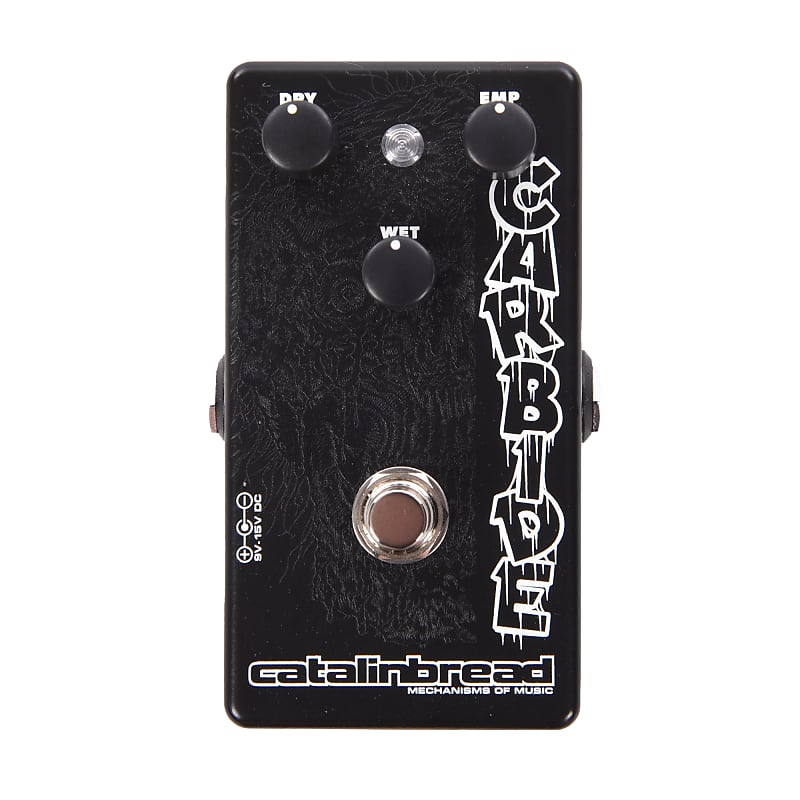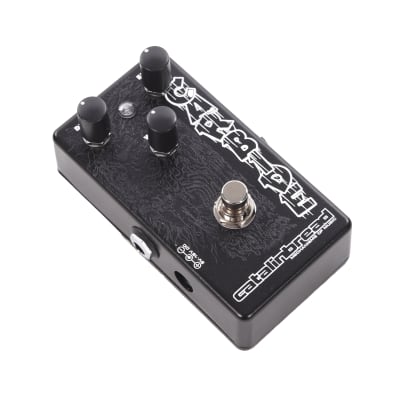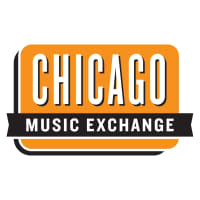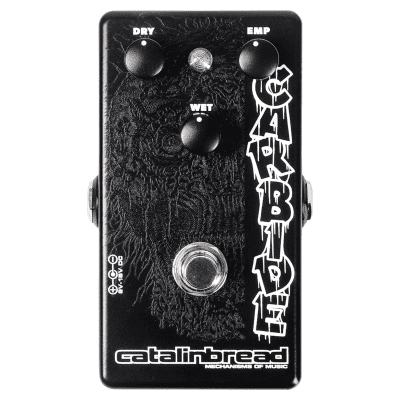This item is in excellent working condition and barely used.If you’ve been a fan of music with guitars tuned lower than standard in the last 30 years, there’s a chance you’ve heard of this hot new sound, usually associated with heavy riffs and power tools. In lay terms, the Carbide is a pulverizing distortion with heady boosts to certain frequency bands—three of them, to be exact—and a ton of volume. Officially, obtaining this “chainsaw sound,” as it came to be known, consists of plugging into a Boss HM-2 Heavy Metal and maxing all four knobs. Our Carbide starts with this at its base, then tweaks the majority of the distortion circuit for maximum crunch and thud. Instead of giving you a paltry blend control, the Carbide splits your signal into two paths; one path heads to a powerful clean boost specially configured to downtuned instruments, the other heads into the gears of the distortion. Each path is given its own volume knob before being mixed in parallel, letting you fine-tune the right amount of dirt. An Emphasis control tightens up the extreme low end while cutting treble, letting the boosted frequency bands jump out of the mix.
CONTROLS
- Dry Volume and Wet Volume: These two knobs control the volume levels of the dry, boosted path and the wet, “chainsaw” path. When either one is down, it disappears from the mix. These two circuits are in parallel, so you can mix both sides to your taste or rig.
- Emphasis: The stock HM-2 circuit gives you two “color mix,” or EQ knobs: L(ow) and H(igh). The “L” knob controls a frequency boost at 87Hz, but the “H” knob actually controls two different bands simultaneously, at 958Hz and 1279Hz. The Carbide keeps these three boosts intact, but the Emphasis control cuts frequencies around these bands, making them pop a little more. Like the “H” knob of the original, the Emphasis control adjusts two different filters simultaneously, one at 63Hz and a treble shelving filter. The Q of the low filter is just wide enough to butt up against the onboard bass boost. while knocking out pesky sub bass.
- POWER SUPPLY: The Carbide accepts a center-negative DC power supply from 9 to 15 volts, capable of supplying at least xxmA of current (over is fine). Plugging in anything other than this (center-positive, AC, higher voltage, etc.) will potentially brick the Carbide. I cannot recommend doing this. Check your supply and make 100 percent sure it says all the right stuff. If you plug in the wrong supply, you’ll immediately send your pedal to the shadow realm. Even though that sounds pretty cool, your Carbide doesn’t want to go there, this I can promise.
Please Note: The item displayed in the images may not be the actual item you receive. 



